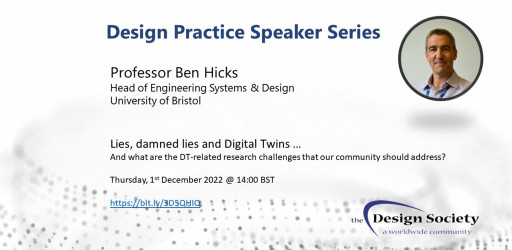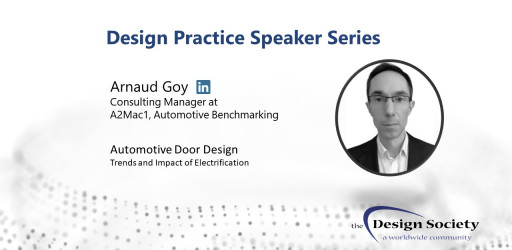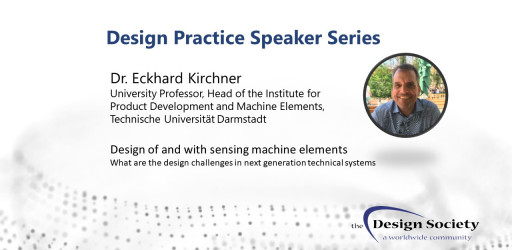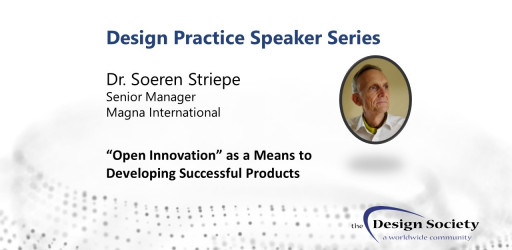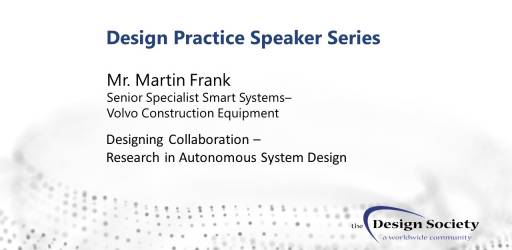Michel Schaffers, Eveline Rosseel, Sofie Burggraeve, Joren Pelfrene, Klaas Gadeyne, Frederik Petr // 2022
Given the Industry 4.0 trend towards smaller lot sizes and large product families, there is a need to increase the design efficiency in terms of cost and lead time. Design decisions taken in the ...
Florian Reichelt (1), Daniel Blank (2), Daniel Holder (1), Thomas Maier (1) // 2022
The use of agile methods can also be advantageous in the development of physical products, as pilot projects have shown so far. However, the transfer of agile methods to the entire organisation is ...
Duraisamy, Rimmie; Andersson, Kjell // 2022
A product development process can help in understanding of the complex system dynamics involved in the designing of a Wave Energy Converter (WEC). Identification of the key risks and uncertainties at ...
Lorenzo Giunta, James Gopsill, Lee Kent, Mark Goudswaard, Chris Snider, Ben Hicks // 2022
The act of prototyping is a key element of the design process. However, capturing information on how prototypes evolve and influence one another is a complex problem. This paper presents an iterative ...
Isaline Bisson (1,2), Morad Mahdjoub (1), Mohsen Zare (1), Jean-Bernard Bluntzer (1), Jean-Claude Sagot (1), Fr // 2022
Immersive technologies have an increasing use in professional training. However, the usability of applications has limits due to a lack of consideration of end users in the design of these new ...
Felipe Guti // 2022
Prototypes are a critical aid in the product development process, allowing designers translate concepts to reality. However, the execution of prototypes depends heavily on the designer experience, ...
Jing Wang, Charlie Ranscombe, Boris Eisenbart // 2022
The increasing availability of smart products creates a more pronounced need for designers to prototype and communicate interactive and environmental qualities of product during their design process. ...
Lee Kent, James Gopsill, Lorenzo Giunta, Mark Goudswaard, Chris Snider, Ben Hicks // 2022
Prototyping is a well-established and valued design process activity. However, capturing prototypes and the tacit knowledge that led to and was gained from their creation is a challenge. Beyond that, ...
Islas Munoz, Juan Antonio (1); Baha, Ehsan (1,2); Muratovski, Gjoko (3) // 2022
Thorsten Schmidt, Anastasia Marbach, Frank Mantwill // 2022
This paper transfers some state-of-the-art methods of recommender systems for an application in the product development process of variant rich products in the automotive industry. Therefore, an ...
Yvonne Yu Bing Wong, Sam Conrad Joyce, Lucienne Blessing // 2022
Design process modelling is well-founded in fields of mechanical engineering, and product design and development but not in Building Design (BD). This paper looks at the selection process when ...
Luccarelli, Martin // 2022
Romain Pinqui // 2022
The design of large-scale engineered systems relies on the extensive use of models. Although there are few papers that study design review practices, we did not find any on model-based design ...
Lewis Urquhart (1), Andrew Wodehouse (1), Brian Loudon (2) // 2022
This paper presents models that identify two “cultures” of computational design practice. By reviewing the established culture of computational optimization efforts and contrasting it with the ...
Andreas Claus Hansen (1,2), Pelle Lundquist Willumsen (1), Josef Oehmen (1) // 2022
The objectives and scope of a construction project is defined in the early design stage, the fuzzy front-end. This stage is crucial for project risk management and success, but traditional risk ...
Matteo Zallio, P. John Clarkson // 2022
Designing accessible and inclusive buildings is essential if they are to provide enjoyable and inspiring experiences for all their occupants. Research revealed that many architectural design ...
Martin Leo Valdivia Dabringer, Anton Dybov, Carina Fresemann, Rainer Stark // 2022
Currently systems grow in complexity and more aspects, such as socio-technical aspects or the obligation to produce proof become more important. Both require a safety analysis on the system level ...
// 2022
An innovative design process which has been conducted under the restrictions during the covid-19 pandemic is in focus in this study. Visits were banned so user-centred design activities were ...
Tiffany Sun Liaw, Nils Gehlenborg // 2022
There is a growing demand for the adoption of user-centric design processes for the development of computational biology software as usability becomes a major concern. Our team develops interfaces ...
Mark Goudswaard (1), Lee Kent (1), Lorenzo Giunta (1), James Gopsill (1), Chris Snider (1), Filip Valjak (2), Kim A. Christensen (3), Harry Felton (1), Daniel Nygård Ege (3), Ricardo M. Real (1), Chris Cox (1), Nikola Horvat (2), Sampsa Kohtala (3), Sindre Wold Eikevåg (3), Tomislav Martinec (2), Marija Majda Perišić (2), Martin Steinert (3), Ben Hicks (1) // 2022
This paper provides an overview and appraisal of the International Design Engineering Annual (IDEA) challenge - a virtually hosted design hackathon run with the aim of generating a design research ...
Tessier, Virginie // 2021
The social practice of design is well implanted in the professional field. Working with others from inside or outside the field is recognized as beneficial for a project’s quality and efficiency. ...
Benjamin Gerschütz, Benjamin Schleich, Sandro Wartzack // 2021
For the successful integration of data-driven methods in existing processes, it is first necessary to know these methods and their fields of application, potentials, and individual limits. This ...
Zhang, Yanfang (1); Inamura, Tokushu (1); Ito, Shinichiro (2); Cruz, Christian (3) // 2021
In the 21st century, global environmental changes and rapid changes in social structures have led to a variety of social issues. To solve these global issues, new mechanisms need to be created. In ...
Glyn-Davies, Adela; Russell, Paul // 2021
As designers, consultancies [1] and publicly funded design organisations [2] increasingly acknowledge the potential for the use of Design to positively contribute toward social impact, Social Design ...

